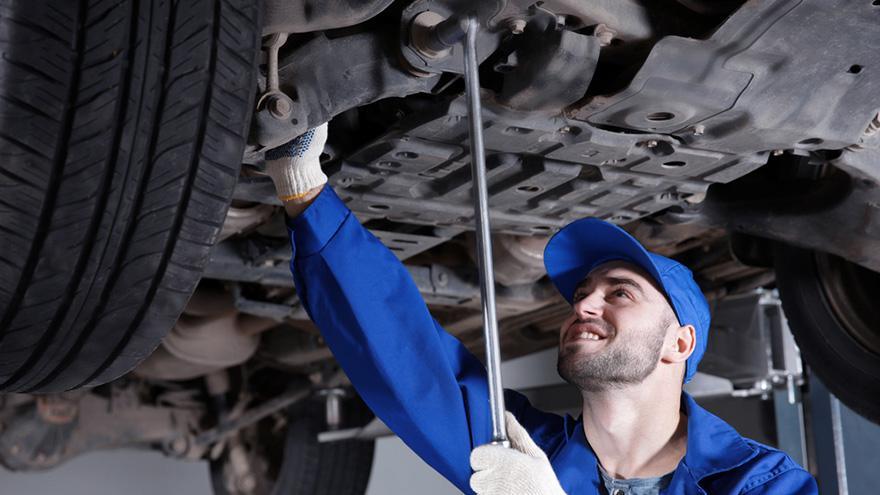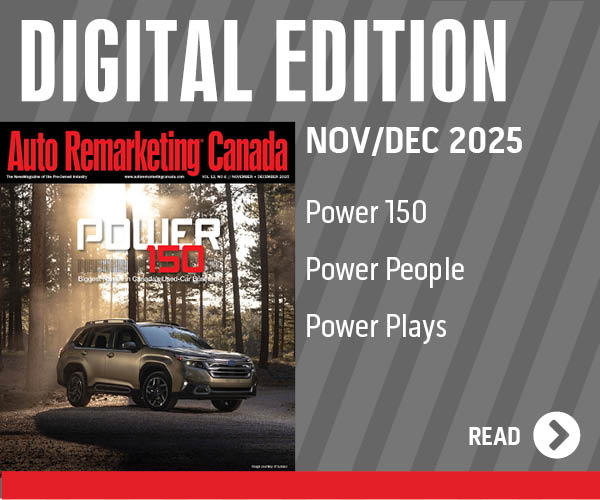Service departments bounce back, provide dealers opportunity for big profits, customer trust

By subscribing, you agree to receive communications from Auto Remarketing and our partners in accordance with our Privacy Policy. We may share your information with select partners and sponsors who may contact you about their products and services. You may unsubscribe at any time.
The vehicle service market is on the rise in the automotive industry, according to new research from J.D. Power.
The recently released 2022 Canada Customer Service Index shows that as vehicle owners in Canada transition to a “post-pandemic world” and return to pre-pandemic driving routines, the auto service industry is in a position to see a strong rebound — especially among 4- to 12-year-old used vehicles.
Take this number, for example: According to J.D. Power, the service industry’s market value is expected to reach $10.9 billion this year, up from $6.6 billion in 2021. That’s even an expected spike from the $10 billion in 2019, before the COVID pandemic rocked the market.
What is this boom driven by? According to J.D. Power, the move is mainly driven by a rise in the average cost per visit to the auto shop.
J.D. Ney, automotive practice lead at J.D. Power Canada, explained in the study’s news release, “In addition to driving more, some owners are catching up on repairs that were put on hold because of the pandemic, and others are hanging on to their vehicles longer due to inventory shortages and the high price of used cars,” both contributing to more expensive and perhaps a greater number of service visits, in general.
Subscribe to Auto Remarketing to stay informed and stay ahead.
By subscribing, you agree to receive communications from Auto Remarketing and our partners in accordance with our Privacy Policy. We may share your information with select partners and sponsors who may contact you about their products and services. You may unsubscribe at any time.
But there’s even more good news for dealerships.
Dealers are also experiencing an increase in the number of average annual visits per customer (1.5 in 2022 vs. 1.1 in 2021), accounting for 47% of all service visits, and capturing 58% of industry revenue.
Ney spoke with Auto Remarketing Canada to drill down into the study results further and what it means for dealers, specifically.
“Back in 2021, we are experiencing varying degrees of lockdowns, certainly harsher than a lot of the lockdown measures that were put in place in the U.S. So, the 2021 study involved a lot of the service activities that were most impacted by pandemic measures,” said Ney. “Come 2022, a lot of the restrictions are lifted, and maybe not quite business as usual — but something close to it.”
Ney said one of the trends J.D. Power has been tracking is pent-up demand or delayed repair work — going hand in hand with the “astronomical” rise in vehicles prices.
“You’ve got that 9-year-old car that four years ago, you would've just traded in that vehicle and got another car. But with the combination of inventory constraints and cost, I think these trends are leading people to rethink that in the past that one repair may have been the trigger to trade in the car. And now, that calculation is different,” said Ney.
Ney explained that when margins were compressed, earlier in the 2000s, dealers often spent quite a bit more time and attention on the service side of their business, as it ended up being a real profit driver at that point.
“And so, it’s interesting now that dealers and dealer groups are spending a bit more time and attention on the service side, even while margins are at historical highs,” Ney said.
Ney said from a business fundamentals standpoint, the dealership’s service side of the operation is always key to the overall health of the business. And now, “It’s probably a good time to focus on service, given the low inventory rates across the marketplace,” he said.
There are a few additional key findings of the 2022 study, according to Ney, one being that customer experience and convenience are driving loyalty. According to the study, positive prior experience with the service department, convenience of location and word-of-mouth recommendation from family or friends are the top drivers.
Good first impressions also play a role in establishing this customer trust that will pay off down the road, and that good first impression has a lot to do with the state of the facility, according to Ney.
The study showed customers’ trust in their auto-service provider trends upward in correlation to satisfaction with the service facility. Trust level of customers who are not satisfied with the service facility (3.06 on a 7-point scale) was significantly lower than those who were very satisfied with the facility (6.82).
“Success in this study and as it relates to the customer experience is really about identifying what your customer expects and what they are looking for,” said Ney. “And it’s about finding ways to exceed those expectations kind of across the board.”
The study found that how much the customer trusted the dealer operation or aftermarket location they visited was largely based on first impression when they walk in the door, an area which Ney wasn’t typically a focus of the study.
But with this year’s results, Ney said they are starting to look at the impact of that initial reaction.
“Whether it’s something as small as whether the coffee is good, or if it is served in a porcelain or styrofoam cup, these impressions actually do have an impact, and they matter,” Ney said. “I think the overall message we carry to our clients this year is just make sure you're identifying what your customer expects, and then just find ways to exceed those, really across each measure.”
In terms of brand performance among dealers, Lexus dealerships ranked highest in customer service satisfaction with a score of 829. Mercedes-Benz was next with a score of 824, and GM dealership rounded out the top three (818).
Ney said the spike of overall value in the marketplace in the 2022 study was certainly higher than in past studies.
“But it remains to be seen whether this is the kind of new natural resting place of the market, or if there is some pent-up demand in that number,” Ney said. “So, a return to pandemic levels notwithstanding, I expect the market to settle into a kind of normalized level in the $10 billion range.”
The J.D. Power 2022 Canada Customer Service Index study gauges satisfaction on five factors: service quality (32%); vehicle pick-up (20%); service facility (17%); service initiation (16%); and service adviser (15%).


